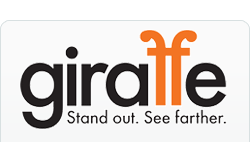PMP training |
Measuring business impact |
Can we be one division? |
Barry Callebaut AG
Performance Management Process trainingSituation:
A new performance management process was ready to roll out in a leading manufacturing company with 8,000 employees worldwide.
Challenge:
Much of the company's recent growth had been through M&A activities, and there were multiple definitions of what "performance" should mean. Performance evaluations would also be linked to bonuses, adding to the stakes. While the technical aspects of implementing the system were challenging, the biggest obstacle was overcoming managers' resistance to having potentially difficult conversations with their reports regarding targets and objectives, performance and improvement.
Solution:
We developed an orientation and training program for managers to introduce the system and the new framework. The workshops included practice examples and role plays. This allowed managers to experience firsthand the effort involved in setting "SMART" objectives, rating performance, and coaching in a constructive, future-oriented development conversation. HR business partners were also trained to provide ongoing support.
Results:
The first- and second-year results showed marked improvement, exceeding objectives year over year. Compliance and quality improved, and managers responded that they were much more comfortable with the process than at any time in the past.
"The PMP was a true challenge from a change management perspective. It would become a tool for the organization to identify high-performers, and a catalyst for managers to develop core skills such as setting SMART goals, listening and providing feedback.
Involving key stakeholders in designing the process and the manager training was key to making this change. Jerry Murphy's original ideas for manager development and his learning perspective were very helpful to the success of the program."
Alice Larsen, former Head of Global Human Resources, Barry Callebaut AG

Various clients
Measuring business impact through success historiesSituation:
Companies need solid, objective evidence that their training investment is effective — what is the business impact of this investment?
Challenge:
Despite the claims of numerous corporate training books and articles, most methods of calculating the ROI of training prove impractical and wrongheaded in their attempt to isolate training impact from the work environment.
Solution:
We have developed "success histories," survey-based evaluations based on Brinkerhoff's Success Case Method (SCM). The evaluations are rigorous, easy to understand, and become a powerful development tool for continuous program improvement.
Results:
Success histories have proven the business impact of many learning & development programs, and have provided excellent information for improvement efforts. But the most powerful outcome has been a new level of conversation and cooperation between training people and the owners of the business issues
The data introduce important issues of personal and career development, and the goals of the training participant and the manager. They can also provide a roadmap for follow-up activities and ongoing support back on the job.

National not-for-profit organization
Strategy / change workshopSituation:
The publishing division of a major non-profit needed to take a hard look at its strategic and editorial direction. Political factions had developed inside the group, new products had been added without any strategic rationale, and much of the portfolio had grown redundant and unprofitable.
Challenge:
Sales and financial data clearly showed the problems and how they had developed. But stakeholders from different topic areas had developed conflicting loyalties and competing ‘pride of authorship' for their product lines. Could they all develop a unified strategy for the division and apply more discipline to the product development process? Could they adopt a realistic product life cycle perspective in managing the current portfolio?
Solution:
We designed and facilitated a 2-day strategy workshop for management and key stakeholders in the division. Working to a 5-year time horizon, participants got together in cross-function teams to clarify their mission and strategic goals, and identify objectives, milestones and key responsibilities. The toughest discussion was around reducing the current portfolio.
Results:
The workshop produced a clear statement of the division's mission and 5-year strategic goals. Stakeholders agreed on milestones, responsibilities and metrics. They also committed to a group-wide ‘gate' process for product development.
The group also learned that it can be much easier to ‘change' the future in a 2-day workshop than to deal with the past. People acknowledged their individual and partisan loyalties, committed to work together as a business unit, and began the difficult discussion of how to achieve a 40% reduction of SKUs.


